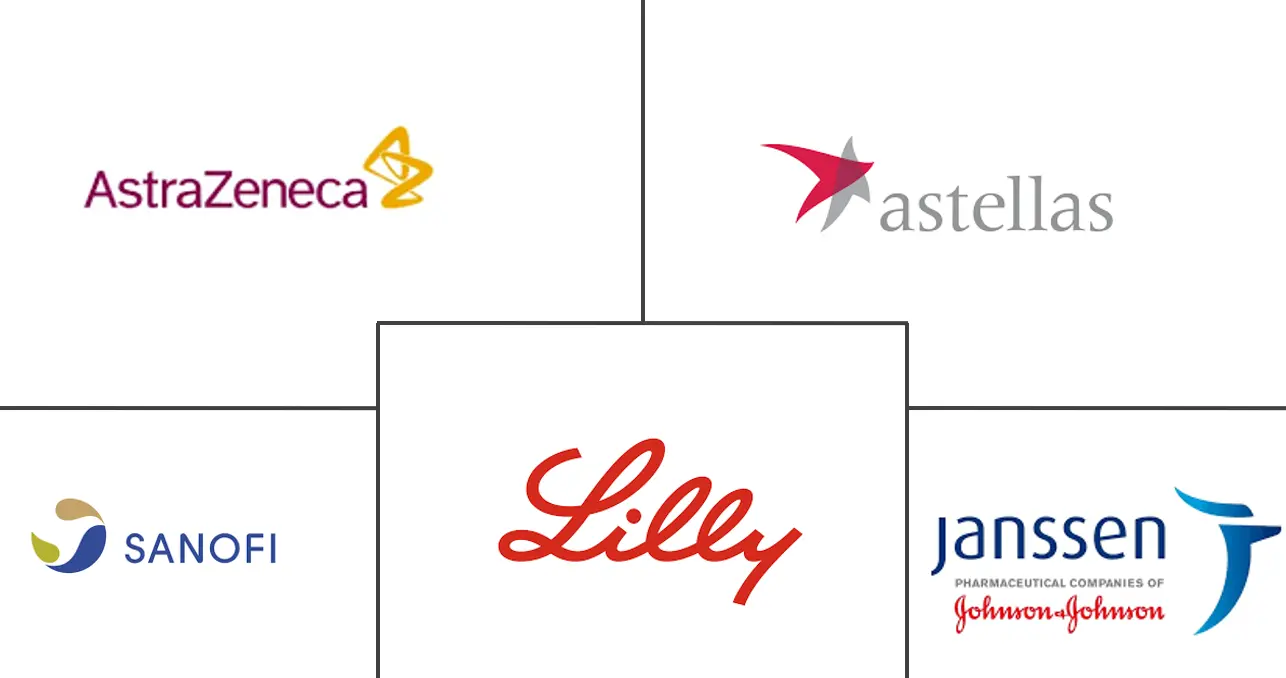Philippines Oral Anti-Diabetic Drug Market Size and Share
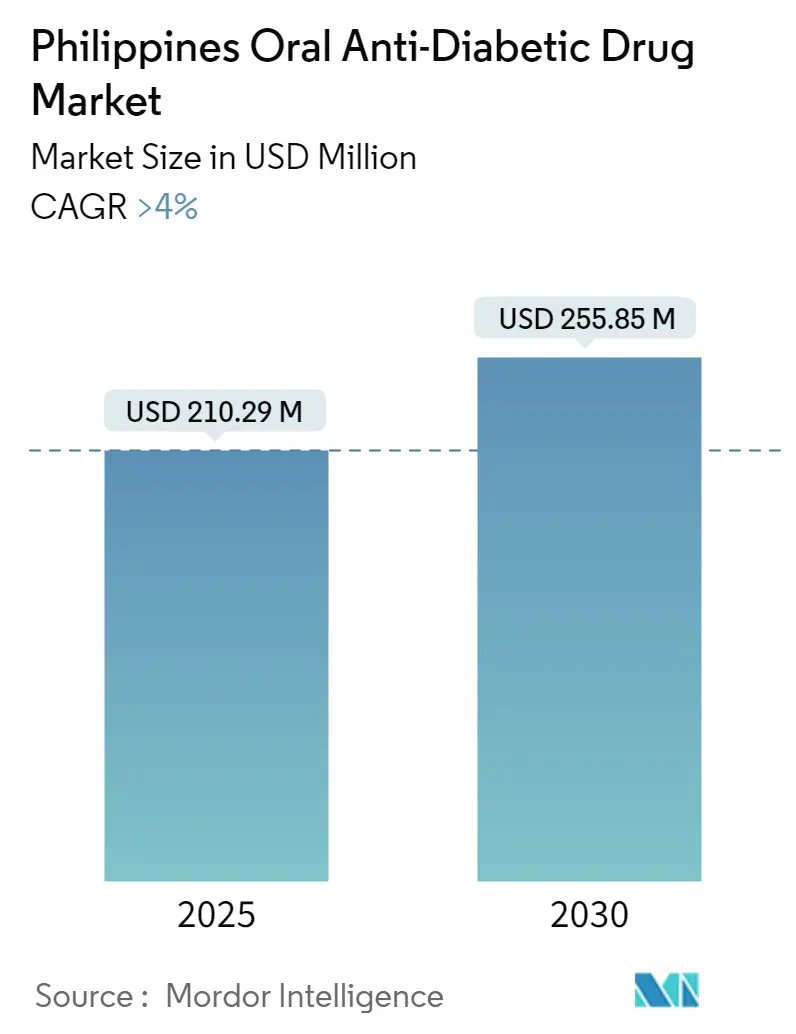
Philippines Oral Anti-Diabetic Drug Market Analysis by Mordor Intelligence
The Philippines Oral Anti-Diabetic Drug Market size is estimated at USD 210.29 million in 2025, and is expected to reach USD 255.85 million by 2030, at a CAGR of greater than 4% during the forecast period (2025-2030).
A new disease known as a SARS-CoV-2 viral strain brings on COVID-19. Most infected individuals will experience mild to moderate respiratory disease and recover without special care. Serious illnesses are more likely to affect the elderly and people with underlying medical disorders such as diabetes, hypertension, heart disease, lung disease, obesity, and cancer. The virus enters the heart, lungs, and other bodily cells, triggering inflammatory changes that harm several organs and cause inflammation.
Systemic inflammation and diabetes have been linked. Studies have shown that individuals with diabetes had increased viral entry, a lowered immune response, reduced viral clearance, and dysregulated inflammatory markers. Diabetes patients may be just as susceptible to COVID-19 infection as healthy individuals.
On the other hand, because diabetes is a core component of the illness, people with diabetes have a greater risk of hospitalization, ICU admissions, severe sequelae, and fatality after contracting COVID-19. Diabetes patients may have an equal chance of contracting COVID-19 as people without the disease. However, because diabetes is a key illness feature, those who get COVID-19 are more likely than those without diabetes to require hospitalization, be admitted to an intensive care unit (ICU), experience severe consequences, and die.
The insulin medication category holds a substantial market share. Insulin is used by more than 100 million individuals globally, including 100% of those with Type 1 diabetes and 10% to 25% of those with Type 2 diabetes. Only a few insulin producers are operating on the market, and insulin production is complex. As a result, there is intense competition among these companies, which always work to meet patients' needs by offering insulin of the best caliber.
High blood sugar levels caused by poor insulin generation and activity characterize the complex disease known as diabetes. The pancreatic hormone insulin regulates the body's blood sugar levels. Uncontrolled diabetes has several negative effects, such as renal failure, blindness, leg amputation, heart attack, and stroke. Data from the DOST-FNRI indicate that 14.2% of people have prediabetes. Out of every five Filipinos, one develops diabetes or prediabetes, which together causes abnormal glucose levels.
Philippines Oral Anti-Diabetic Drug Market Trends and Insights
Sulfonylureas Segment Occupied the Highest Market Share in the Philippines Oral Anti-Diabetic Drugs Market in the current year.
Regarding revenue, the Sulfonylureas segment is anticipated to lead the Philippines' Oral Anti-Diabetic Drugs Market and post a CAGR of over 1% during the forecast year.
Metformin and sulfonylureas are the most prescribed medications due to their availability and cheaper cost. 42% of the patients were on insulin, compared to 78.5% of patients using OAD. Biguanides and then sulfonylureas were the OADs that were most often recommended. This practice makes sense given that these 2 drugs in the Philippines are the most cost-effective because their generic counterparts are widely available and consequently highly economical to the public sector.
Metformin prescription rates are understandable, but the persistence of sulfonylurea prescription rates in the face of reprioritization in virtually all diabetes CPGs (due to high rates of hypoglycemia) emphasizes the predominant and ongoing influence of economics as a driver of diabetes care. As urbanization continues to portend a dramatic growth in disease incidence over the coming years, diabetes treatment in the Philippines remains a concern for the country's primary care doctors. National health insurance, or PhilHealth, and private out-of-pocket expenses, with the latter serving as the primary funding source, are used to pay for healthcare. Depending on the membership category,
PhilHealth offers different coverage. The main advantages include up to 90 days of inpatient treatment per family, disease-specific outpatient packages, and a Z-benefits package for several severe disorders, including frequent complications of diabetes such as coronary artery bypass surgery, prosthetic limb replacement, and kidney transplants.
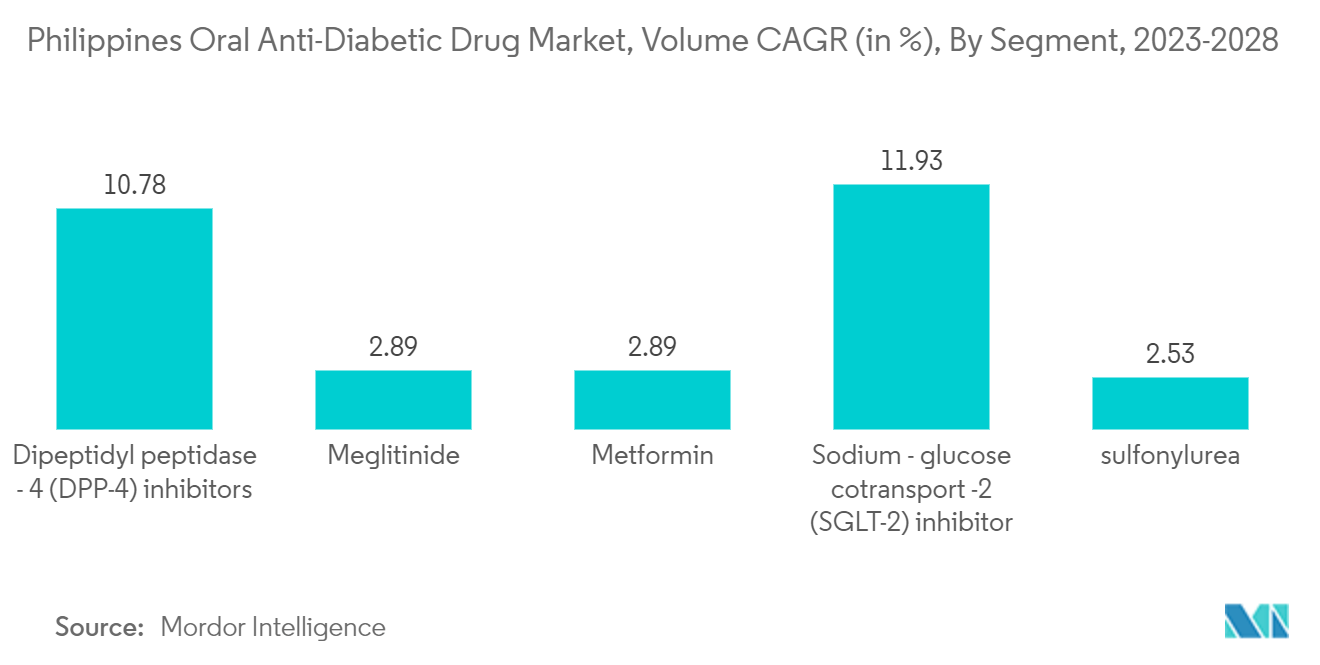
The increasing Diabetes Population in the Philippines is driving the market.
Diabetes is becoming more common in the Philippines. This epidemic is greatly influenced by rapid urbanization, growing dependency on electronic devices, and a sedentary lifestyle. Regarding resources, government assistance, and economics, diabetes care in the Philippines is underfunded and difficult.
The national insurance system does not cover a preventative approach to comprehensive diabetes treatment, and private insurance firms only provide a limited amount of diabetic coverage. Therefore, most patients depend on "out-of-pocket" costs, such as routine medical care and laboratory tests. As a result, inadequate medication adherence hinders the ability to prevent problems. Additionally, cultural preferences for a traditional diet high in refined sugar, such as white rice and bread, make behavioral changes challenging.
Noncommunicable diseases (NCD; noninfectious or nontransmissible illnesses), including diabetes, account for six of the top ten causes of death in the Philippines and are a significant public health issue. Heart and vascular diseases still account for 31% of fatalities, making them the main killers. Malignant neoplasms, chronic obstructive lung disease, and chronic kidney disease are other NCDs. Because of a lack of resources, limited government assistance, and economic factors, diabetes care is limited in the Philippines.
The government insurance program does not provide full coverage for diabetic care, and commercial insurance providers only provide a portion of diabetes coverage. Because of this, most patients must pay "out-of-pocket" costs like lab testing and regular prescriptions. The most effective hypoglycaemic drug for treating diabetes is insulin therapy; however, if insulin is kept improperly, its effectiveness will degrade. Diabetes and other NCDs account for over 70% of all fatalities in Thailand. Being overweight raises the risk of type 2 diabetes by three times, while being obese increases the risk by nearly seven times.
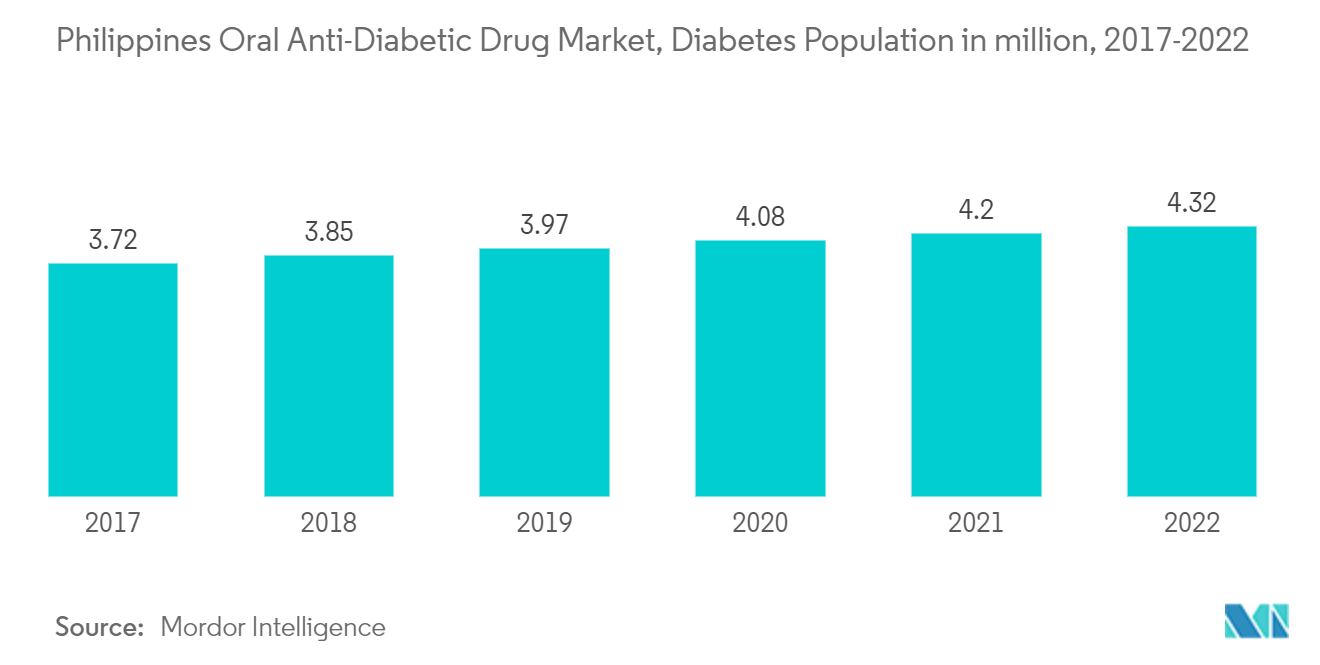
Competitive Landscape
The Philippines Oral Anti-Diabetic Drug Market is consolidated, with a few major manufacturers like Eli Lilly, AstraZeneca, Sanofi, and Janssen Pharmaceuticals having a global market presence. In contrast, the remaining manufacturers are confined to the other local or regional markets. Companies are focusing on innovations in diabetes drugs.
Philippines Oral Anti-Diabetic Drug Industry Leaders
Astrazeneca
Astellas
Janssen
Eli Lilly
Sanofi
- *Disclaimer: Major Players sorted in no particular order
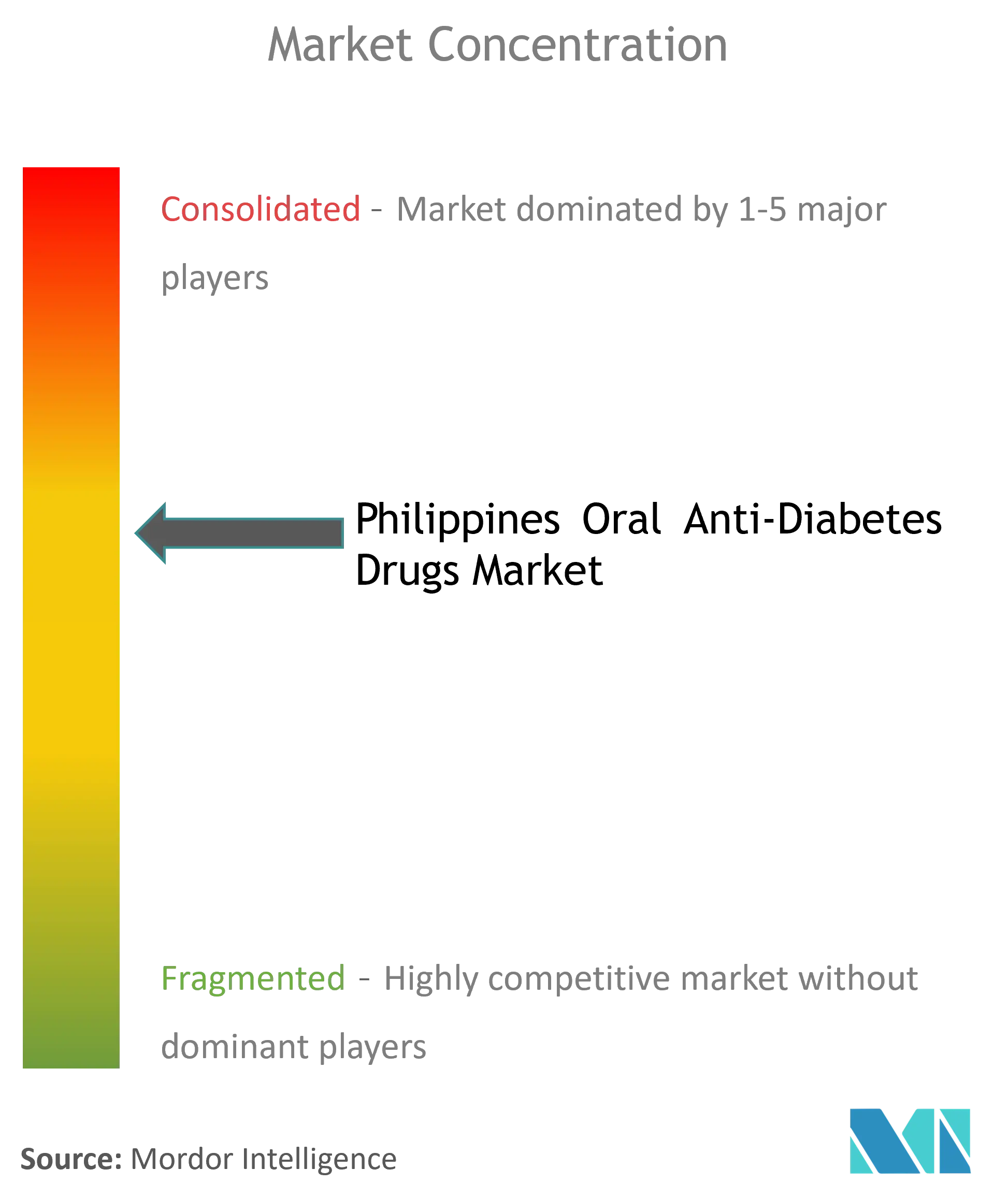
Recent Industry Developments
- March 2023: The approval of brolucizumab by the Philippine Food and Drug Administration (FDA) for the treatment of visual impairment caused by diabetic macular edema (DME) is a major achievement. DME is a prevalent microvascular complication in diabetic patients that can severely affect their vision and potentially result in blindness. This milestone is particularly significant for working-age individuals with DME, as they often face challenges in adhering to treatment due to the management of various diabetes-related conditions.
- May 2022: Mounjaro (tirzepatide) injection to improve blood sugar control in adults with type 2 diabetes was approved as an addition to diet and exercise. Mounjaro was effective at improving blood sugar and was more effective than the other diabetes therapies with which it was compared in clinical studies.
- March 2023: Daewoong Pharmaceutical's Envlo to enter the global market in full swing with filing for product licenses in three ASEAN countries. Submitted an NDA to Indonesia, the Philippines, and Thailand.
Philippines Oral Anti-Diabetic Drug Market Report Scope
Orally administered antihyperglycemic drugs reduce blood glucose levels. They are often used in type 2 diabetes care. The Philippines oral anti-diabetic drug market is segmented into drugs. The report offers the market size in value terms in USD and Volume in terms of Unit for all the abovementioned segments.
| Biguanides | Metformin |
| Alpha-Glucosidase Inhibitors | Alpha-Glucosidase Inhibitors |
| Dopamine D2 receptor agonist | Bromocriptin |
| SGLT-2 inhibitors | Invokana (Canagliflozin) |
| Jardiance (Empagliflozin) | |
| Farxiga/Forxiga (Dapagliflozin) | |
| Suglat (Ipragliflozin) | |
| DPP-4 inhibitors | Onglyza (Saxagliptin) |
| Tradjenta (Linagliptin) | |
| Vipidia/Nesina(Alogliptin) | |
| Galvus (Vildagliptin) | |
| Sulfonylureas | Sulfonylureas |
| Meglitinides | Meglitinides |
| Oral Anti-diabetic drugs | Biguanides | Metformin |
| Alpha-Glucosidase Inhibitors | Alpha-Glucosidase Inhibitors | |
| Dopamine D2 receptor agonist | Bromocriptin | |
| SGLT-2 inhibitors | Invokana (Canagliflozin) | |
| Jardiance (Empagliflozin) | ||
| Farxiga/Forxiga (Dapagliflozin) | ||
| Suglat (Ipragliflozin) | ||
| DPP-4 inhibitors | Onglyza (Saxagliptin) | |
| Tradjenta (Linagliptin) | ||
| Vipidia/Nesina(Alogliptin) | ||
| Galvus (Vildagliptin) | ||
| Sulfonylureas | Sulfonylureas | |
| Meglitinides | Meglitinides | |
Key Questions Answered in the Report
How big is the Philippines Oral Anti-Diabetic Drug Market?
The Philippines Oral Anti-Diabetic Drug Market size is expected to reach USD 210.29 million in 2025 and grow at a CAGR of greater than 4% to reach USD 255.85 million by 2030.
What is the current Philippines Oral Anti-Diabetic Drug Market size?
In 2025, the Philippines Oral Anti-Diabetic Drug Market size is expected to reach USD 210.29 million.
Who are the key players in Philippines Oral Anti-Diabetic Drug Market?
Astrazeneca, Astellas, Janssen, Eli Lilly and Sanofi are the major companies operating in the Philippines Oral Anti-Diabetic Drug Market.
What years does this Philippines Oral Anti-Diabetic Drug Market cover, and what was the market size in 2024?
In 2024, the Philippines Oral Anti-Diabetic Drug Market size was estimated at USD 201.88 million. The report covers the Philippines Oral Anti-Diabetic Drug Market historical market size for years: 2019, 2020, 2021, 2022, 2023 and 2024. The report also forecasts the Philippines Oral Anti-Diabetic Drug Market size for years: 2025, 2026, 2027, 2028, 2029 and 2030.
Page last updated on:
Philippines Oral Anti-Diabetic Drug Market Report
Statistics for the 2025 Philippines Oral Anti-Diabetic Drug market share, size and revenue growth rate, created by Mordor Intelligence™ Industry Reports. Philippines Oral Anti-Diabetic Drug analysis includes a market forecast outlook for 2025 to 2030 and historical overview. Get a sample of this industry analysis as a free report PDF download.
